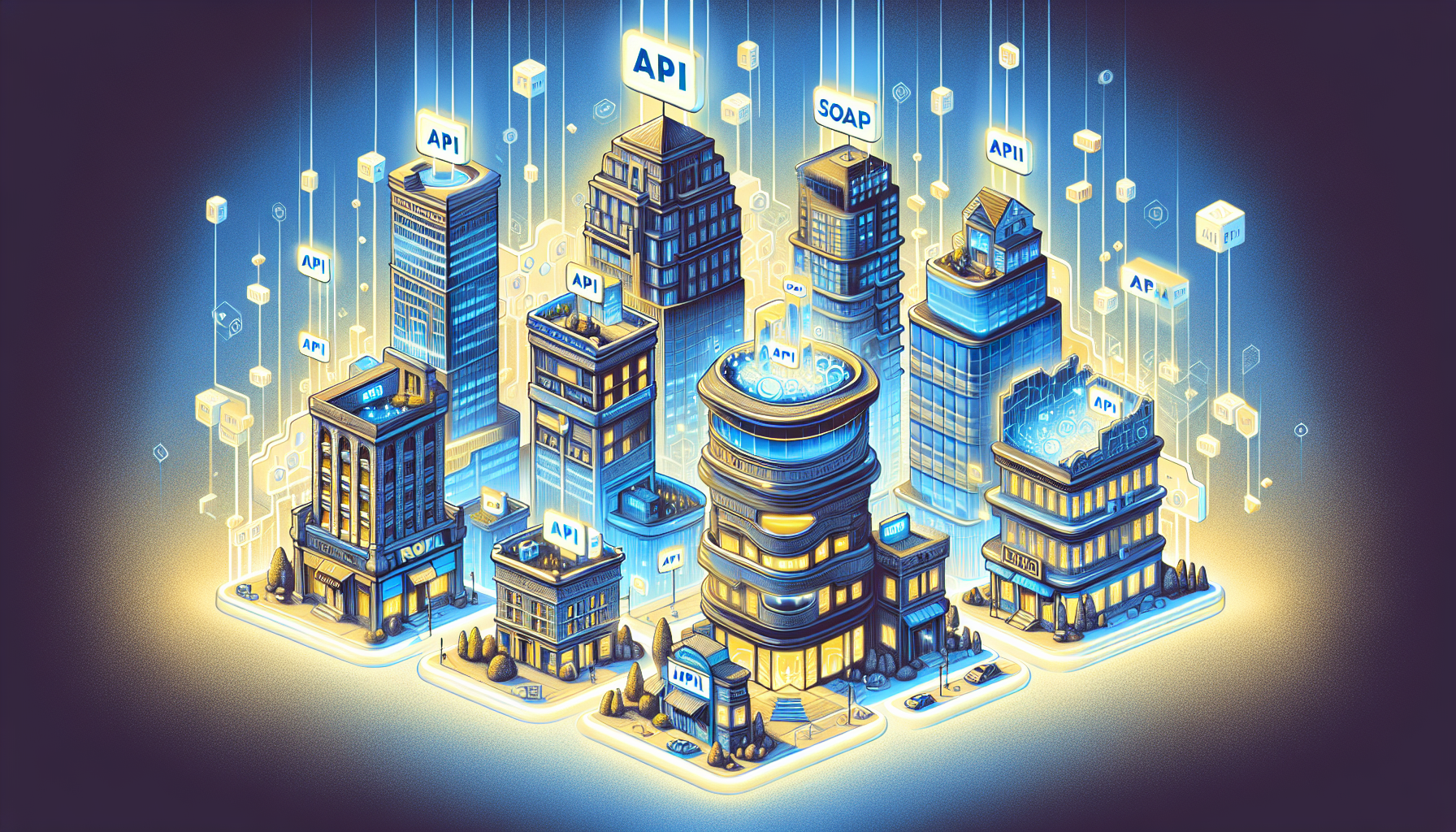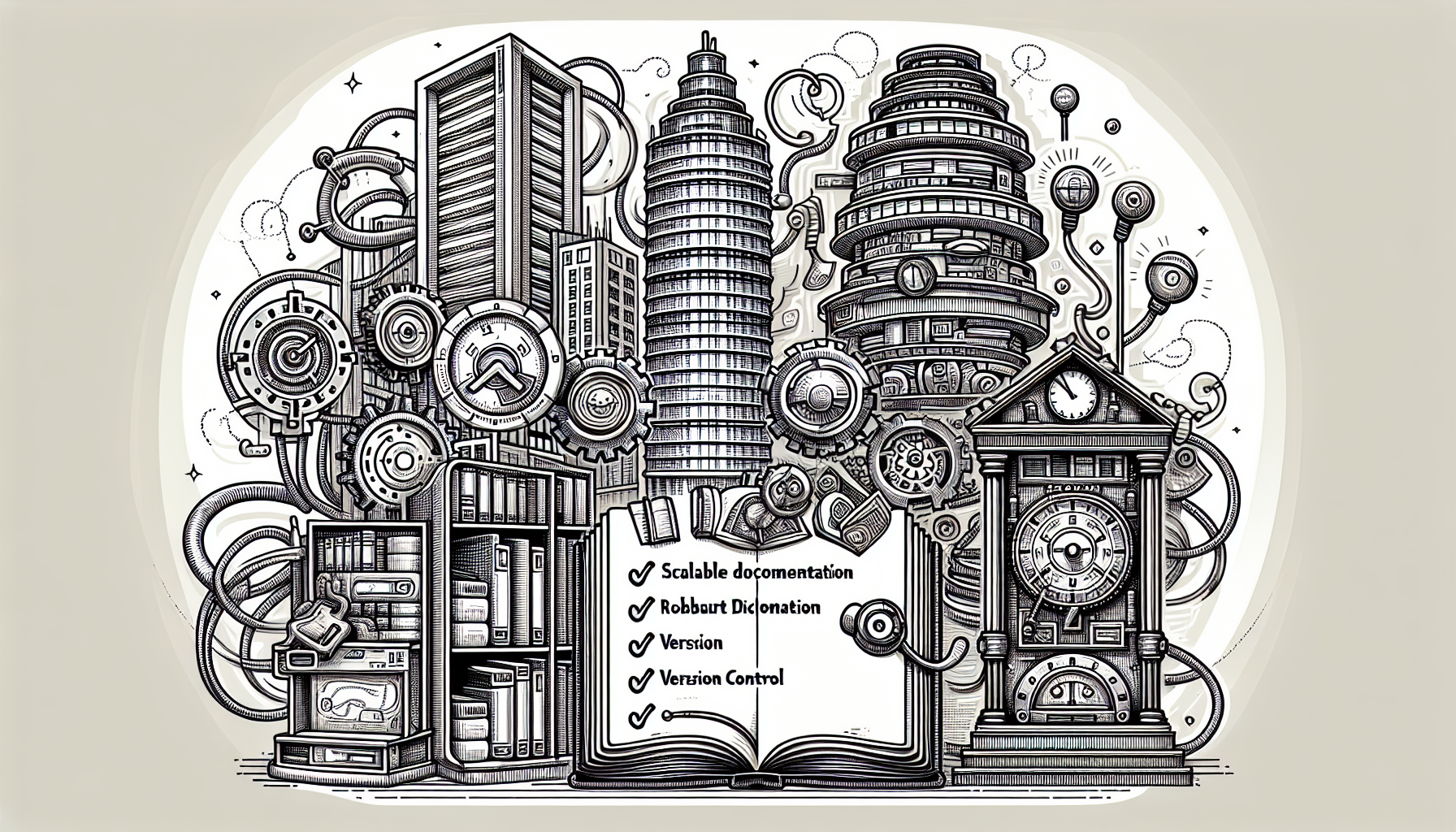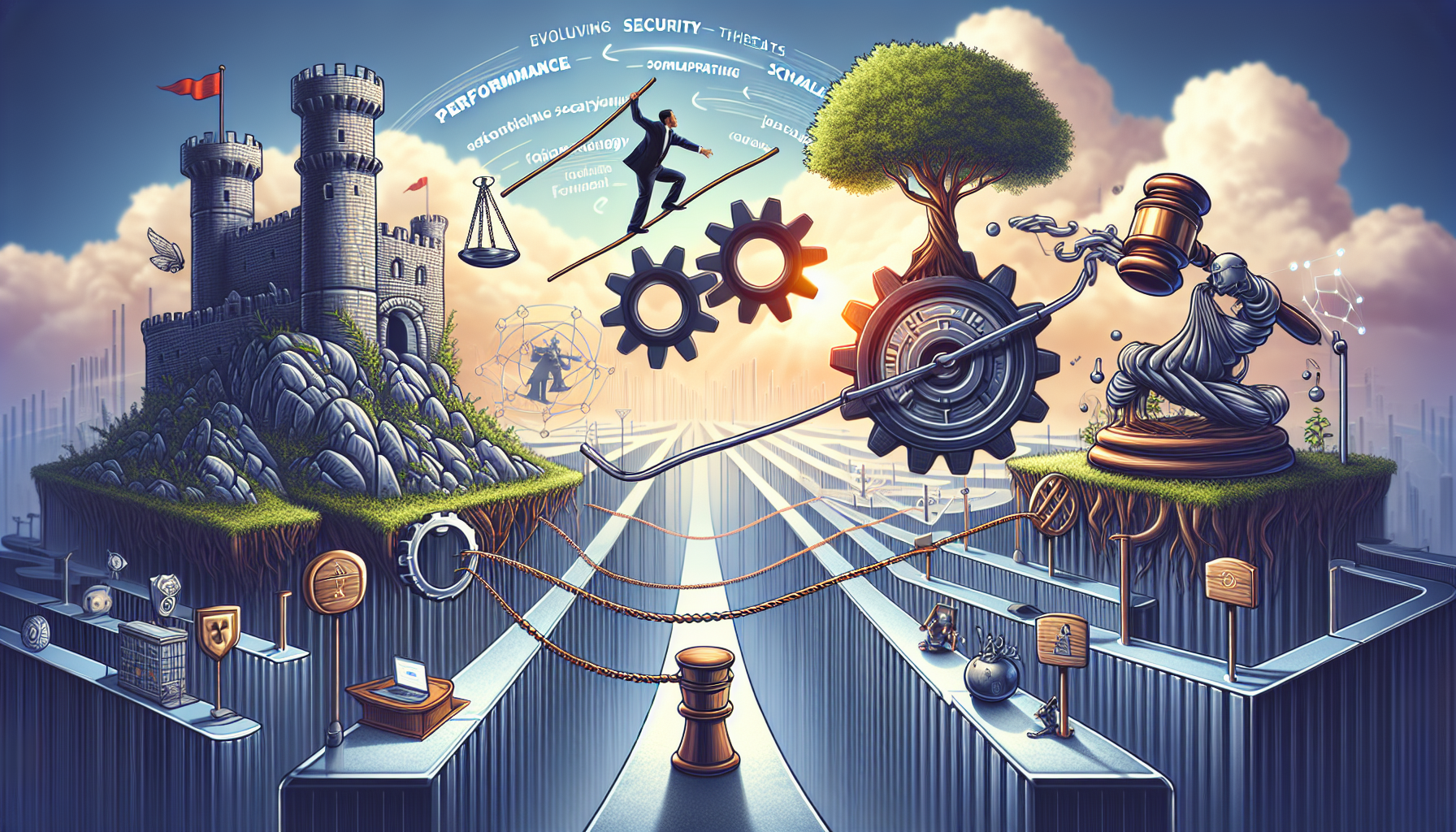The Ultimate Guide to API for Developer Productivity

In this guide, we help you navigate the API landscape with confidence as a developer. This no-nonsense guide spotlights RESTful, SOAP, and GraphQL APIs and their roles in optimizing your projects. We discuss best practices and integration strategies that can refine your development toolkit, helping you build resilient, interconnected software systems with ease.
Key Takeaways
- An API developer plays a critical role in developing software. They work with various API types such as RESTful, SOAP, and GraphQL to ensure adaptable, reliable, and performant integrations.
- APIs must aim for longevity, user satisfaction, and seamless functionality. To achieve these goals, an API developer must adhere to best practices—for example, efficient and scalable API design, robust documentation, and diligent version control.
- An API developer must continually adapt to changing technologies and threats by balancing performance and scalability, maintaining strong security measures, and ensuring regulatory compliance.

Exploring the API Ecosystem for Developers

The vast expanse of the API ecosystem primarily consists of these APIs:
- RESTful APIs, known for their simplicity and scalability
- SOAP APIs, sought after in high-stakes enterprise environments for their reliability
- GraphQL APIs, the darlings of dynamic data retrieval.
Each type of application programming interface (API) weaves a unique thread in the fabric of software development. API developers collaborate across the spectrum to integrate and create APIs that transform user experience.
Understanding RESTful APIs
RESTful APIs, the cornerstone of modern web services, represent the elegance of simplicity. Adhering to the REST architectural style, they offer a set of constraints that make API integration a breeze. With principles such as a uniform interface and statelessness, RESTful APIs ensure that each API call remains self-contained, promoting independence and scalability. An API developer, skilled in RESTful API design, relishes the flexibility provided by these APIs. RESTful API allows them to create services that not only scales but also offer superior maintainability across various web applications.
RESTful APIs serve as the lingua franca for the web. They use HTTP methods like GET, POST, PUT, and DELETE to interact with API endpoints through clear and well-defined URIs (uniform resource identifier). The strength of a RESTful API lies in its ability to leverage the existing web infrastructure. It has become a preferred choice for developers aiming to build web APIs that operate efficiently and offer simplicity of use.
The Role of SOAP in API Integration
When the conversation shifts to the enterprise arena, the simple object access protocol (SOAP) takes center stage. SOAP provides value in its strict standards and transactional prowess. SOAP APIs, with their XML data format, by design perform under the demanding requirements of complex operations. This makes them the go-to for industries like finance and telecommunications.
Despite their resource-intensive nature, SOAP APIs facilitate seamless communication SOAP APIs ensure that API developers work within a framework of enhanced security and reliability. For that reason, despite the resource-intensive nature, SOAP APIs don’t come in the way of seamless communication.
Leveraging GraphQL for Tailored Data Retrieval
GraphQL stands out as a revolutionary approach to querying data. GraphQL allows clients to specify exactly what they need, eliminating over-fetching and under-fetching of data. For dynamic web applications that demand efficient, tailored data retrieval, GraphQL brings game-changing benefits to the table.
By optimizing GraphQL query structure, an API developer can ensure server efficiency and fast responses. This marks a significant shift towards more performant web services.
See our comprehensive blog post to better understand the differences between GraphQL and REST.
The Art of API Development: Best Practices

The artistry in API development doesn’t lie only in the creation. You can make a difference by also the curating APIs through best practices that ensure longevity and user satisfaction. This includes rigorous API design principles, detailed API documentation, and diligent version control. These three principles constitute a trifecta that an API developer must master to create APIs that stand the test of time and scale gracefully.
Designing Efficient and Scalable APIs
Efficiency in API design doesn’t stem from a happy accident. It comes as the result of deliberate planning and adherence to the RESTful principles that an API developer advocates.
A uniform, stateless interface separates concerns, paving the way for scalable APIs that can grow alongside the business. As API developers integrate and maintain APIs, they employ load balancing and abstract away dependencies. These ensure that APIs can withstand the inevitable surges in traffic and data demands. Decoupling techniques and abstraction not only aid in managing increased traffic but also in ensuring that the API performance remains robust.
An API developer must possess a comprehensive understanding of REST architecture styles. Understanding the architecture allows them to craft scalable APIs that remain highly performant throughout API lifecycles. Moreover, architectural insights help compose APIs that offer forward-compatibility with emerging technologies and trends.
Ensuring Robust API Documentation
API documentation acts as a road map that guides developers in navigating the capabilities and intricacies of an API. We can consider API documentation a critical touchstone for API developers to collaborate and succeed.
A detailed documentation ensures that everyone involved has a clear understanding of how to leverage the API’s features, manage its inputs and outputs, and handle any potential errors. Visual aids such as diagrams and flowcharts can demystify complex concepts and illustrate the data flow. This way, an API developer can make the API more accessible and user-friendly to consumers.
But effective documentation requires vigilance and updates to mirror the API’s evolution. Developers must maintain a living document that reflects changes, provides version changelogs, and communicates updates to minimize disruptions for consumers. Tools such as Swagger and frameworks like Express.js, Flask, and Django can provide invaluable support in this case. They have builtin features and toolings that allow every API developer to create and maintain APIs with robust documentation.
Maintaining APIs with Version Control
We can compare version control in API development to a time capsule. It preserves the history of an API while accommodating the future. It manages a delicate balance between managing changes and maintaining backwards compatibility, so that API developers can update API endpoints without throwing existing consumers into disarray.
While maintaining APIs, developers must keep a keen eye on seamless integration. For that reason, developers follow strategies like adding new endpoints or properties, instead of altering existing ones.
As part of a clear and effective versioning strategy, developers often incorporate the API version in the URI path. It explicitly communicates the current version and simplifies resource caching. Resource caching is essential for maintaining reliable and efficient APIs.
Continuous integration pipelines and unit tests play a pivotal role in verifying backwards compatibility. They ensure that API developers work within a framework that supports both innovation and stability.
API Integration Techniques

API integration techniques binds disparate software systems, enabling smooth data exchange and enhancing user experience. API developers employ a variety of methods to ensure effective and secure API integration, handling data formats and transfers with precision and care.
Connecting Disparate Software Systems
Effective system integration dissolves data silos and fosters data exchange between applications and databases. This results in streamlined operations across industries—for example, CRM (customer relationship management) and ERP (enterprise resource planning) systems. CRMs sync sales and marketing efforts. ERPs offer real-time insights into inventory and market conditions. API integration acts as the linchpin that holds these diverse software applications together.
The efficacy of integrating APIs hinges on data integrity. Developers employ robust data integration processes that validate and handle errors, ensuring that the information exchanged remains accurate and adds value to the business.
Regardless of the underlying architectures, applications need to function harmoniously in today’s digital infrastructure. End users need guidance to make the best out of the products that incorporate different kinds of services and software interfaces. More often than not, the complexity results in customers facing issues from time to time. Therefore, commitment to good technical and customer support also plays an important role.
Authentication Methods for Secure APIs
Authentication ensures only the right entities can access sensitive data. API developers implement API keys that act as unique identifiers. These keys also help monitor usage, maintaining the sanctity of the APIs. OAuth 2.0 and JSON web tokens (JWT) take security further by enabling stateless authentication and secure transmission of user information. OpenID Connect (OIDC) facilitates single sign-on capabilities, streamlining user experiences across platforms.
Securing APIs is not a one-time setup but a continuous journey of adaptation. An API developer must stay ahead of the curve. In this digital age, vulnerabilities emerge and evolve in more or less the same frequency as innovations. Both from an individual and organization standpoint, putting security as an afterthought amounts to catastrophe.
For these reasons, developers must understand a variety of authentication methods and incorporate them into their API design to protect against evolving threats. By centralizing control through API gateways, an API developer can ensure that security becomes a foundational element of API integration.
Handling Data Formats and Transfers
If we consider data as the currency of the digital world, each API developer act as a banker. An API developer manages data formats and transfers data with meticulous precision.
To exchange data, developers mainly use JSON and XML. Each serving its purpose in RESTful communication and structured SOAP interactions. GraphQL revolutionizes this process by enabling highly efficient data retrieval, allowing API developers to implement advanced techniques like pagination and caching to optimize the data transfer process.
Maintaining data quality matters the most when integrating APIs. API developers utilize data quality APIs and ETL processes to validate, deduplicate, and normalize data. These tools and techniques ensure that the integrity of the data doesn’t break throughout its journey.
By adhering to standard formats and implementing course-grained services, API developers ensure efficient and interoperable data transfer. This paves the way for seamless integration across different software systems.
The Role of API Developers in Software Ecosystems

An API developer crafts the protocols that enable software components to converse, collaborate, and co-evolve. They reside at the nexus of software development, crafting scalable APIs that drive innovation and efficiency. As they maintain APIs and create new ones, an API developer works closely with cross-functional teams. A combined effort ensures pivotal contributions to the software ecosystem’s growth and success.
API Development Tools and Languages
An API developer uses an arsenal of development tools and languages. They sculpt the landscape of software applications by creating APIs that boast high quality.
OpenAPI, API Blueprint, and RAML (RESTful API Modeling Language) are just a few of the tools API developers use, each playing a crucial role in defining API protocols and behaviors. Different programming languages have efficient frameworks like Django and Express.js. They empower an API developer to create diverse and dynamic APIs.
From crafting API endpoints to managing API calls, API developers rely on robust tools. For example, Swagger Inspector and client libraries such as Ruby’s Faraday. These tools help developers write elegant and effective code.
The choice of programming language—be it JavaScript, Python, or Java—can influence the APIs design and performance. This often reflects the API developer’s technical skills, their approach to solving complex software challenges, and the use case at hand.
Collaborating with Cross-Functional Teams
When developing APIs, collaboration allows people from engineering, quality assurance, product, governance, security, and other stakeholders to work together. This multifaceted interaction fuels innovation and ensures technically sound API products. It also aligns the product with business objectives and user needs.
By fostering communication and teamwork, API developers can navigate complex performance and functional issues, delivering solutions that resonate with both internal and external developers.
Specializations within API Development
The path of an API developer consists of continual growth and specialization. They learn to tackle various nuances of custom API creation. The strategic insights from a chief technology officer and proper mentorship play instrumental roles in career progression and success.
As an API developer progresses from a junior level to more senior levels, their responsibilities expand and they craft more robust software architectures. These responsibilities encompass the design and implementation of APIs that power web apps, manage payment systems, and facilitate social logins.
Senior API developers carry the mantle of leadership, making pivotal architectural decisions and setting development standards that ripple across the organization. Senior developers directly work with security expert partners for vulnerability assessments and provide ongoing advice to the team. This stands as a testament to the collaborative effort necessary to secure APIs and maintain their integrity.
Some API developers work towards specialized roles like API product manager or solutions architect. These roles not only involve writing code but also contributing to strategic direction of the enterprise API ecosystem.
Navigating API Challenges and Solutions

API developers face a labyrinth of challenges, from performance bottlenecks to security threats. Each obstacle presents an opportunity to innovate and grow. Each obstacle calls upon an API developer’s expertise to navigate these challenges with creative and effective solutions.
Balancing Performance with Scalability
Balancing API performance with scalability compares to walking a tightrope. An API developer must be agile, analyzing usage patterns to identify bottlenecks and incorporating scalability considerations from the onset. By employing caching strategies and regular testing, an API developer ensures that the APIs remain responsive and resilient, capable of handling growth without sacrificing performance.
Cloud-native features and microservices architecture are the building blocks for scalable APIs. They allow developers to optimize throughput and handle increased loads with finesse on platforms like Google Cloud Platform. As part of the optimization process, developers refactor code and select the right data structures. This is one of the crucial steps that API developers take to enhance API performance and ensure seamless integration.
Adapting to Evolving Security Threats
Maintaining security has become a relentless pursuit in the API landscape. API developers must outmaneuver an ever-shifting array of cyber threats. From SQL injection to man-in-the-middle attacks, the dangers get varied and pernicious, demanding a vigilant and proactive approach to API integration. By combining basic authentication with HTTPS and employing TLS encryption, API developers create a bulwark to safeguard sensitive data. These steps ensure that the integrity of API calls remain uncompromised.
To fortify APIs against these threats, API developers engage in regular penetration testing, update security patches, and conduct thorough security audits. These practices not only finds and fixes vulnerabilities but also instills a culture of security within the development process. Some other common techniques and tools include debugging skills, input validation, and implementation of security headers.
These best practices build an essential framework for building secure APIs that can withstand the onslaught of cyberattacks.
Achieving Regulatory Compliance
Regulatory compliance not only comes from legal obligation but also commitment to trust and responsibility. API developers navigate a complex web of standards and regulations. These include GDPR, CCPA, and industry-specific mandates like HIPAA, ensuring that apis adhere to the highest standards of data protection and privacy. There also exists security standards such as OWASP Top Ten and frameworks like NIST or ISO/IEC 27001.
With diligence and foresight, companies must continuously monitor regulatory changes and integrate best practices into API design. API developers work with governance bodies to oversee API security, address non-compliance issues, and maintain an ongoing commitment to protecting user data.
Through this dedication to regulatory compliance, API developers play a crucial role in maintaining user trust. This allows APIs to not only meet but exceed the expectations of security and privacy in the digital age.
Developing Your API Developer Career Path
Embarking on a career as an API developer ushers a journey of discovery and innovation. In a world increasingly dependent on digital interactions, API developers have become the catalysts for change. They craft APIs that enable the functionalities and connectivity users and businesses rely on. Success in this role depends on a blend of technical acumen and the ability to assimilate into an organization’s culture. A balanced and healthy approach ensures that API developers play an integral part in the technological narrative of their companies.
Cultivating Essential Technical Skills
The foundation of an API developer’s expertise lies in a strong command of programming languages like JavaScript, Python, and occasionally C#. Developers harness these programming languages to construct, shape, and bring APIs to production-ready quality. Alongside these programming languages, developers must nurture a deep understanding of web development, including backend development, database management, and the nuances of the request response cycle. These play crucial roles for designing and troubleshooting APIs that resonate with both users and backend systems.
API developers must also navigate the waters of database interactions, employing SQL and NoSQL databases to manage data efficiently. Developers must also implement effective mechanisms so that customers can query data and delete data in real time. To that end, an API developer needs to choose appropriate data structures and search algorithms. Appropriate decisions in this regard can also lead to significant performance enhancements.
With experience in API deployment and cross-platform development, skilled API developers come to possess and master powerful software development tools. These tools allow them to tackle the multifaceted challenges of software development, creating functional and forward-thinking APIs.
Opportunities for Growth and Specialization
The API developer’s career trajectory often ascends from hands-on coding to strategic roles that shape the API landscape. With time and experience, API developers may find themselves leading development teams. They may oversee API architecture, and ensure that APIs align with the broader business strategy. As they grow, API developers may gravitate towards roles like API product manager or solutions architect. In these roles, they can influence API strategy and manage the enterprise API ecosystem.
At the pinnacle of the API developer’s career path lies the potential to become a chief technology officer (CTO). A CTO guides an organization’s technological direction. This apex role encompasses not just technical expertise but also visionary leadership. A CTO steers the company through the technological currents of the future. With each step up the ladder, API developers expand their impact. They shape not just the APIs they create but the very fabric of the software industry itself.
Building a Portfolio and Gaining Experience
A portfolio showcases an API developer’s curated collection of projects and achievements that narrates their professional story. Here API developers can display their best work, express their personality, and highlight their unique talents to potential employers or clients. The homepage of a portfolio sets the stage, introducing the developer’s identity and expertise while providing a glimpse into their creative and technical prowess.
Within a portfolio, API developers should focus on projects that reflect their skills and abilities. They can present code samples, code repositories, and explanatory videos that demonstrate their command of API development. Testimonials and case studies add layers of credibility. Testimonials show how API developers have solved real-world problems and delivered value to clients. Personal projects and freelance work further illustrate a developer’s capabilities, underscoring their communication and time management skills.
By keeping their portfolio up-to-date, API developers signal their commitment to professional growth and their passion for the ever-evolving world of API development.
Summary
We’ve uncovered the pivotal role API developers play in bridging the gap between disparate software systems, securing data exchanges, and driving innovation forward. While API developers master and apply emerging technologies throughout their career, they operate at the forefront of the digital transformation. Armed with technical skills, a collaborative spirit, and a commitment to continuous learning, they steward a connected future. We hope this guide inspires you to unlock your potential and craft digital experiences that resonate across the globe.
As you go forward, you may have to make critical decisions about your API to solve a particular problem. If you ever want to deeply understand your API, its consumers, and grow with an analytical mindset, look no further than Moesif. Moesif empowers you with a comprehensive set of API analytics and monitoring tools. Moesif also offers powerful monetization features that work seamlessly across different billing providers. If you want to confidently move forward and make definitive business decisions, sign up today for a free trial, no credit card required.






